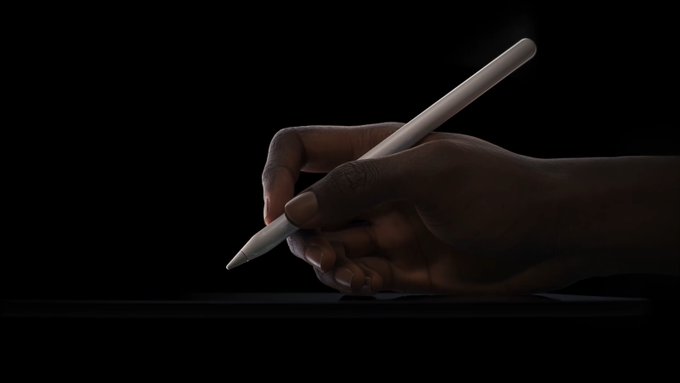The Next-Gen Apple Pencil Is Designed to Work on Any Surface
Apple is working on a next-gen Apple Pencil that could completely change how we interact with digital devices. According to a newly granted patent, this stylus may not need a touchscreen to function. Instead, it uses optical sensors built into the Pencil to detect movement, angle, and positioning—potentially allowing you to draw or write on virtually any surface. The technology could let users write on a desk, notebook, or even in mid-air while still seeing the input on an iPad, iPhone, or MacBook. This development aligns with Apple's recent innovations in spatial computing, especially in the era of devices like the Vision Pro.
Image : Google
How the Next-Gen Apple Pencil Works Without a Touchscreen
Traditional Apple Pencils rely on capacitive touchscreens to register input, but this next-gen Apple Pencil breaks from that mold. It uses embedded optical tracking systems that capture real-time data about how the Pencil is moving. One method described in the patent involves a transparent tip made of cover glass. Light would pass through the tip to the drawing surface, bounce back, and get analyzed by internal sensors. This optical data would then be used to determine movement direction, speed, rotation, and tilt—creating a precise digital mirror of what the user is doing.
Interestingly, the patent also mentions an alternative version of the stylus using a trackball mechanism, potentially offering another way to detect and translate motion. With these innovations, the Pencil could register input even when it’s not touching a screen, opening up exciting possibilities for creative professionals, educators, and everyday users.
More Than Drawing: Expanded Use Cases for Apple’s New Stylus
The next-gen Apple Pencil isn't just for drawing or note-taking. Apple’s patent suggests it could act as a full-fledged spatial input device. This means the Pencil might support gestures, virtual navigation, and system-level interactions like controlling media, moving files, or even making phone calls. Think of it as a digital wand that works across multiple Apple products—iPhone, iPad, MacBook, and Apple Watch.
The patent illustrations even show users controlling elements on an Apple Watch using the Pencil, which points toward a broader use of the device in Apple's ecosystem. If implemented, this would make the Pencil not just an accessory for artists but a powerful tool for productivity, accessibility, and spatial computing.
The Future of Apple Pencil and Apple’s Spatial Vision
This new patent arrives just weeks after Apple revealed the Logitech Muse at WWDC 2025. The Muse is a spatial stylus created for the Apple Vision Pro, capable of drawing in the air with spatial precision. Apple’s patent builds on that idea but brings the tech in-house, possibly signaling a future where stylus input becomes more immersive and universal across Apple hardware.
With the next-gen Apple Pencil potentially working on any surface—or even no surface at all—it could redefine mobile computing and creativity. It fits perfectly into Apple's ongoing push toward a spatial computing future. For creatives, professionals, and even casual users, this means one thing: your workspace will no longer be limited by the screen in front of you. Apple hasn't officially announced a release date or product details yet, but this patent shows where the company’s headed—and it’s a future that’s more flexible, intuitive, and immersive than ever before.


Post a Comment